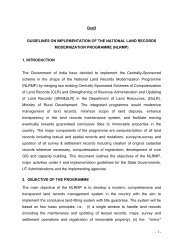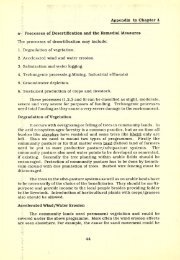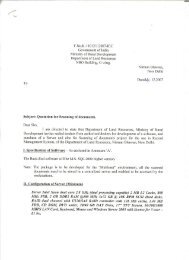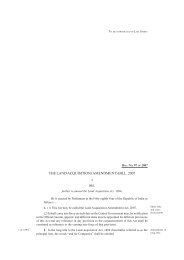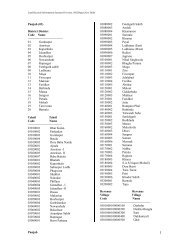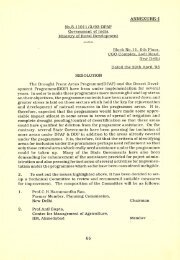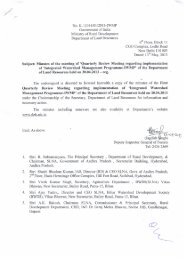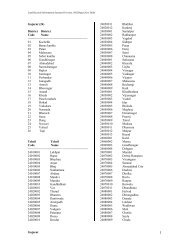Uttarakhand - Department of Land Resources
Uttarakhand - Department of Land Resources
Uttarakhand - Department of Land Resources
Create successful ePaper yourself
Turn your PDF publications into a flip-book with our unique Google optimized e-Paper software.
years have indicated that the supply <strong>of</strong> green fodder in 2003 was only 389.81 million<br />
tonnes (mt), while the demand was 1,025 mt, a huge deficit <strong>of</strong> 61.96%.<br />
According to Ministry <strong>of</strong> Agriculture, contribution <strong>of</strong> livestock to total GDP has<br />
increased from 4.8% during 1980-81 to about 6.5% during 2002-03 and is currently<br />
5.3%. The contribution <strong>of</strong> livestock to agriculture GDP has gone up from 13.8% in<br />
1981 to 23.8% during 2002-2003<br />
In rural areas there is the crisis <strong>of</strong> fodder for livestock. In rural India, domestic<br />
animals are engines that drive the economy. They provide resilience and wealth<br />
people cope with adverse conditions because <strong>of</strong> their livestock. But no policy exists<br />
on how to feed these 500 million or so animals. Areas today aren‟t fodder-secure,<br />
and the grim reality is that food security in this country is not possible without fodder<br />
security.<br />
Animals survive by foraging on available land and on agricultural residues. But the<br />
productivity <strong>of</strong> our common lands-forest and revenue land - are pathetic; grass yields<br />
on these are mostly illusionary. Sheer grazing pressure ensures animals literally<br />
nibble away a pasture‟s productivity, suppressing regeneration <strong>of</strong> grasses and tree<br />
fodder. Add to these the fact that agricultural production is stagnating, or that farmers<br />
are shifting to crops that do not yield fodder.<br />
This crisis <strong>of</strong> fodder security is <strong>of</strong> a great magnitude as first, it concerns the very poor<br />
that depend on livestock to survive another tomorrow. Second, it relates to the<br />
country‟s most neglected lands: common forests. Third, it is about neglected<br />
animals.<br />
The villagers maintain poor quality <strong>of</strong> livestock which have very low milk yields and<br />
the problem is also that animals with higher milk yields - the crossbred cows our<br />
planners are fond <strong>of</strong>-need better quality fodder. These animals do not forage on<br />
degraded land; they require stall-feeding. Improving the animal economy, then,<br />
demands on improving the quality and quantity <strong>of</strong> fodder available to livestock. But<br />
this has simply not been planned for, or done.<br />
104





